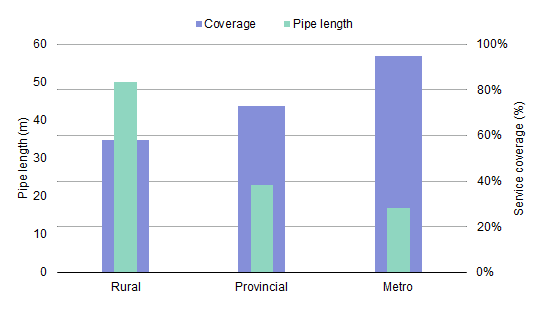
Reaching the unreachable: deploying fibre optic cables in the last mile
June 7, 2017
The high cost of fibre deployment in the access network is still the main obstacle facing broadband connectivity, particularly in rural areas. Low population densities and long drop lengths do not justify the business case. However, urban areas have their challenges too. If no existing infrastructure is available for sharing or reuse, trenching in urban areas can be very costly and disruptive to the environment. The fibre installation cost can be as much as USD65 per metre in advanced economies where trenching can account for up to 80% of the cost.
Obviously, the most viable solution is to share the existing telecom infrastructure or that of other utilities such as gas, electricity lines, sewer and drinking water pipes. In recent years there has been extensive use of municipal sewer systems for fibre deployment in many European and north American cities, such as Paris, Vienna and San Francisco. The council of Cape Town in South Africa has also recently approved the use of its sewer network to speed up fibre deployment. In such a scenario, the fibre cables are either installed manually in large tunnels or with the help of special robots in smaller pipes and water ways. However, this solution is not feasible when the sewer pipes are so small that the cable and the associated fixings threaten to block the sewer and robots cannot be used. This is mostly the case for the home-drop section of the fibre network. Another constraint is the corrosive environment of sewer systems which requires special fixings for the fibre ducts.
However, new solutions for deploying fibre cables in service water pipes promise significant cost cuts. A British based infrastructure technology company has very recently reported two projects in Catalonia (Spain) and Anacortes (USA). In rural Catalonia, fibre cables have been deployed in both trunk and service water pipes. This solution, shown schematically in Exhibit 1, uses water industry approved fittings to introduce a microduct within the existing water supply pipe. It requires an intervention at two points along the water line, at the street connection and directly at or inside the home. Following the installation of the microduct, a fibre can be blown end-to-end through the conduit, without coming in contact with water. It is claimed that the cost savings are as high as 70%, with installation times ranging from 1-2 hours per drop. Only two workers are required for each installation. The reported fibre drop lengths were as long as 550m. If the installation of the branch fittings occurs in pre-existing water chambers, no digging or trenching is required.
Exhibit 1: Schematic illustration of fibre-optic cable in potable water pipes [Source: Network Strategies]

In New Zealand, the total length of the water supply network is 4386km. According to Water New Zealand, the residential coverage of service water is about 58% in rural areas, with an average pipe length of 52m (Exhibit 2). As of 2015, it estimated that the cost of a single duct trench in rural New Zealand is between NZD33-158 per metre [1], depending on the type of soil. This makes building dedicated trenches for fibre unfeasible. Accordingly, the Rural Broadband Initiative focused mainly on upgrading the existing copper and wireless access. Fibre is only being considered for hospitals, schools and certain public buildings. However, in view of the relatively large coverage of the potable water network, using water pipes could be an efficient solution for bringing UFB to rural residents, since it virtually eliminates trenching costs.
Exhibit 2: Potable water service coverage and average pipe length in New Zealand [Source: Water New Zealand]

In suburban and rural areas, each fibre drop can be a separate project and no single solution can solve all cost issues. Therefore, it is very important for a telecommunications infrastructure provider to have a diverse set of fibre installation options at hand to suit every situation. Moreover, regulatory and technological approaches should go hand in hand, since the use of other infrastructure such as water pipes requires co-operation with utility companies and authorities.
[1] Beca (2015) FPP Corridor Cost Analysis – Response to Submissions, Report 4, December 2015.
